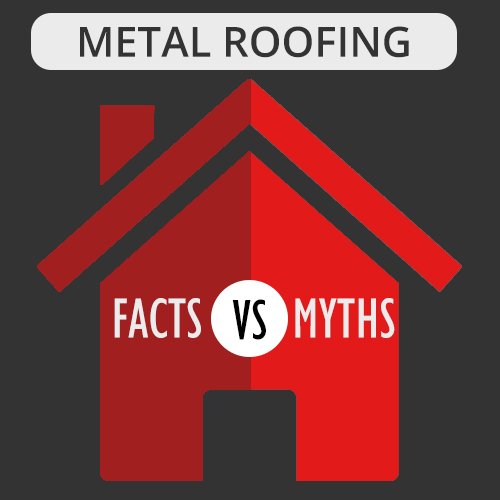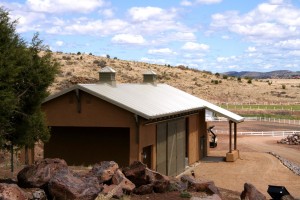Properly detailed and installed metal roofing is one of the most resilient, lasting, efficient and attractive kinds of roofing systems for commercial and institutional buildings. Yet there are plenty of questions about metal roofing, and building teams often find time in project meetings to address the most common, recurring topics and myths.
I call these “mythbuster meetings,” because many of the questions are fabrications – concerns arising from less savvy professionals or from competitive “selling points.” Among the most prevalent untruths:
Myth about Wind Uplift
Myth: Wind uplift affects metal roofing more than other roofing types.
Reality: While the noncontinuous nature of metal roof attachments makes them susceptible to wind uplift concerns, most roofing types are prone to similar effects. ASCE/SEI calculations for wind loading and FEMA studies of storm areas have shown that properly applied metal roofing outlasts other roof assemblies during hurricanes and tornados.
Building geometry affects how well the roof survives, regardless of roof type. Engineering determines how many insulation board fasteners are needed, and the optimal and safest distances between clips for standing seam systems at corners and perimeters, where the forces are greatest. The interlocking or “active fastening” helps metal roofing pass severe wind and uplift tests including ASTM E1592, UL 580 and UL 1897, and the Miami/Dade County codes, according to a report from Stanford University.
Myth about Heat
Myth: Metal panels get hotter and have more thermal bridging because metal conducts heat so well.
Reality: Depending upon the surface finish, metal roofing can “provide enhanced energy efficiency with its solar reflectance and infrared emittance properties […] to meet the climate requirements of the building,” according to the Stanford University paper and research highlighted by the Cool Metal Roofing Coalition.
As compared to other roofing types, metal roofing tends to be highly reflective and is available with high emissivity. Insulated metal roofing panels have foam insulation that delivers R-values up to R-8.515 per inch thickness and total roof U-factors that exceed those of many other roofing types, helping projects meet strict energy code rules.
Myth about Lightning
Myth: Metal roofs are more likely to get hit by lighting than any other roof types.
Reality: That is bunk; simply untrue. You can read my detailed blog on the subject, or for serious mythbusters refer to the Metal Construction Association’s Technical Bulletin MCA13a, which gives a full and authoritative overview.
As the MCA summarizes, “Because metal roofing is an electrical conductor and a noncombustible material, the risks associated with its use and behavior during a lightning event make it the most desirable construction available.” That’s right: The best option for lightning risks.
I hope some of the above information provided insight and assurance about building with metal roofs. If you have any additional questions or concerns, submit them here to our technical experts.

